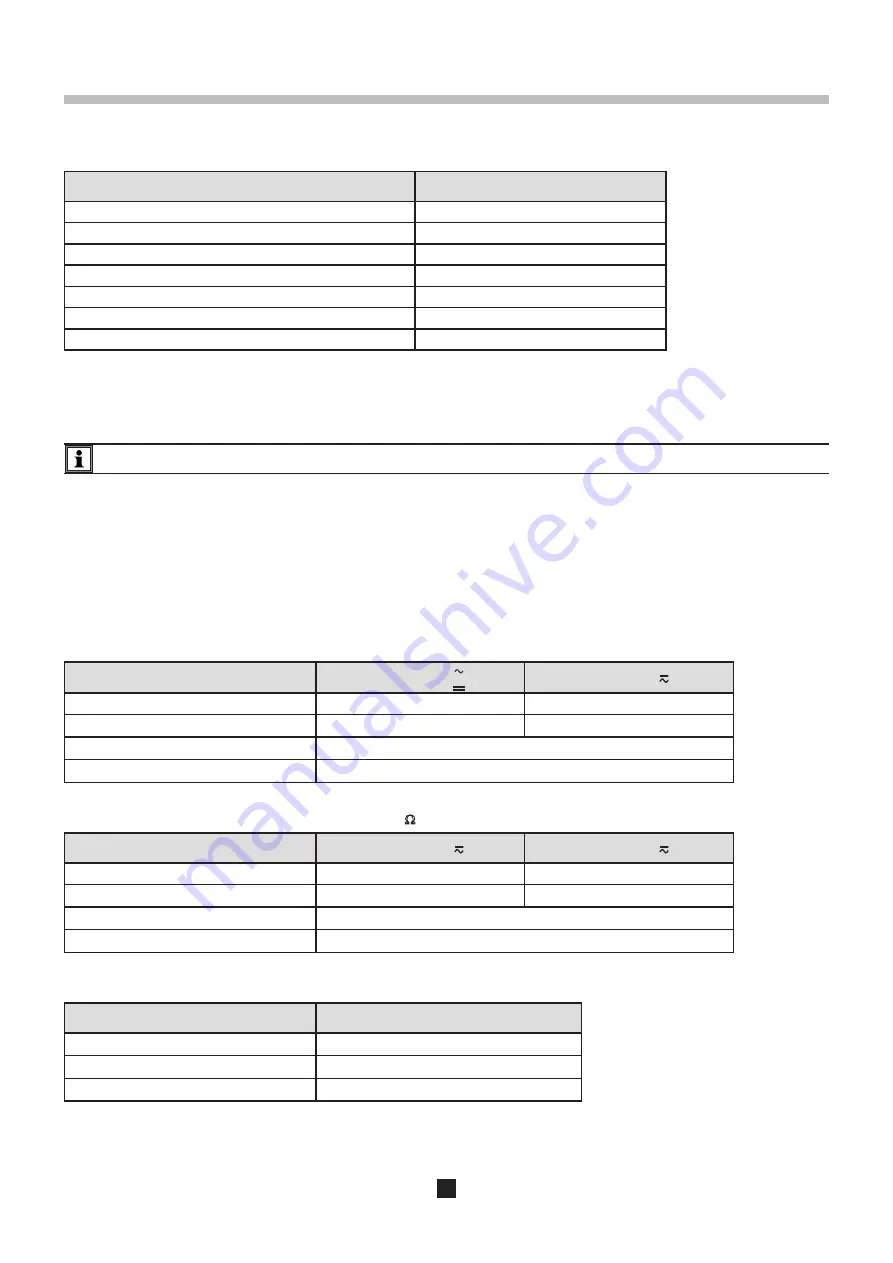
59
6. TECHNICAL CHARACTERISTICS
6.1. GENERAL REFERENCE CONDITIONS
Quantity of influence
Reference values
Temperature
20 ± 3 °C
Relative humidity
45 to 55 % HR
Supply voltage
9.6 ± 0.2 V
Frequency
DC and 45 to 65 Hz
Electric field
< 1 V/m
Magnetic field
< 40 A/m
Supply
on battery (mains not connected)
The intrinsic uncertainty
is the error defined under the reference conditions.
The operating uncertainty
includes the intrinsic uncertainty plus the effects of variation of the quantities of influence (supply
voltage, temperature, interference, etc.) as defined in standard IEC-61557.
The device is not designed to operate when the charger is connected. The measurements must be made using the battery.
6.2. ELECTRICAL CHARACTERISTICS
6.2.1. VOLTAGE MEASUREMENTS
Particular reference conditions:
Peak factor = 1.414 in AC (sinusoidal signal)
AC component <0.1% in DC measurement
DC component <0.1% in AC measurement
Measurement range (AC or DC)
0.2 - 399.9 V
2.0 - 399.9 V
400 - 550 V
Resolution
0.1 V
1 V
Intrinsic uncertainty
± (1.5 % + 2 ct)
± (1.5 % + 1 ct)
Input impedance
450 k
W
Frequency of use
DC and 15.8 … 450 Hz
Voltage measurements in insulation measurement (M
W
, PE)
Measurement range (AC or DC)
5,0 - 399,9 V
400 - 550 V
Resolution
0,1 V
1 V
Intrinsic uncertainty
± (3,7 % + 2 pt)
± (3,7 % + 1 pt)
Input impedance
145 k
W
Frequency of use
DC and 15.8 to 65 Hz
Contact voltage measurements
Measurement range (AC)
2.0 - 100.0 V
Intrinsic uncertainty
± (15% + 2 ct)
Input impedance
6 M
W
Frequency of use
15.8 … 65 Hz
This voltage is displayed only if it exceeds U
L
(25 V, 50 V or 65 V).
















































